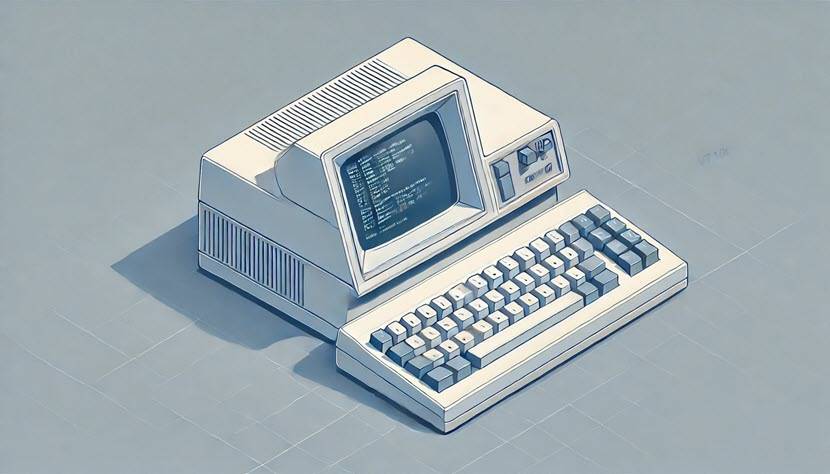The VT100 is a landmark video terminal that established critical standards for text-based computer interfaces. Its design and functionality influenced subsequent terminal hardware and software emulation, shaping user interaction with computing systems for decades.

What Is VT100?
The VT100, manufactured by Digital Equipment Corporation (DEC) in 1978, was a programmable video terminal designed for connecting to minicomputers like the PDP-11. It communicated via serial interfaces and supported ANSI X3.64 escape sequences, which standardized terminal control codes for cursor positioning, screen editing, and text formatting.
The terminal’s firmware, powered by an Intel 8080 or 8085 microprocessor running at 2 MHz, enabled it to process commands efficiently while maintaining compatibility with earlier DEC models like the VT52. Its adoption across industries solidified it as a reference model for terminal emulation.
The Features of VT100
The VT100’s technical advancements are categorized into hardware and software innovations.
Hardware Features
The VT100’s hardware innovations focused on modularity and user interaction:
- CRT display. A 12-inch monochrome screen with 24 rows and 80/132 columns, refreshable at 50–60 Hz.
- Modular design. Swappable serial interface modules (RS-232, 20 mA current loop) for flexible host connectivity.
- Keyboard. A 132-key layout with three distinct sections: typewriter-style keys, a numeric keypad, and an editing keypad.
- Memory. 4 KB of RAM for screen buffering and 8 KB of ROM for firmware storage.
Software Features
Software capabilities emphasized standardization and configurability:
- ANSI X3.64 compliance. Supported 38 control sequences, including cursor addressing (ESC [ H), erase functions (ESC [ J), and character attributes (ESC [ m).
- VT52 emulation. Enabled backward compatibility via a dedicated mode switch.
- Configurable parameters. Non-volatile storage for baud rate (110–19,200), parity, and screen width (80/132 columns).
- Macro programming. User-defined sequences assignable to 20 function keys.
How Does VT100 Work?
The VT100’s operation involves three core processes.
1. Data Reception and Parsing
The terminal’s data processing begins with serial communication:
- Incoming data from the host is processed through a UART (universal asynchronous receiver-transmitter), which converts serial signals to parallel bytes.
- The microprocessor interprets escape sequences (e.g., ESC [ 5;10 H moves the cursor to row 5, column 10) and updates the screen buffer accordingly.
2. Screen Rendering
The CRT controller generates timing signals to synchronize electron beam scanning with the screen buffer’s contents:
- Characters are rendered using a built-in 7×9 dot-matrix font stored in ROM.
- Attributes like reverse video or blink are applied by modifying the pixel output.
3. Input Handling
Keystrokes are encoded into ASCII or extended control codes for host communication:
- The terminal transmits codes like ESC O M for PF1 to the host.
- Configuration settings, such as auto-wrap or local echo, are stored in non-volatile memory via DEC’s Setup (SU) command set.
What Are the Function Keys in VT100?
The VT100’s keyboard included dedicated keys organized into functional groups:
| Key group | Keys | Transmitted code | Purpose |
| Programmable keys | PF1–PF4 | ESC P–ESC S | Custom macros or host commands. |
| Numeric keypad | 0-9, Enter, Comma | ESC ? p–ESC ? y | Numeric input or application modes. |
| Editing keypad | ↑, ↓, ←, →, Insert, Delete | ESC A–ESC D (VT52 mode) | Cursor control and text manipulation. |
| Top-row keys | F6–F14 (Shifted/Unshifted) | ESC 1–ESC 9 | Session control or debugging. |
In shifted mode, the numeric keypad doubled as an application keypad, transmitting unique codes like ESC O q for "F17."
What Is the Difference Between VT100 and VT52?
The VT100 improved upon the VT52 in multiple technical domains.
Control Sequence Compatibility
The VT100 expanded the VT52’s command structure with standardized, extensible control codes:
- VT52. Limited to 2-character codes (e.g., ESC A for cursor up).
- VT100. Introduced parameterized ANSI sequences (e.g., ESC [ 5A to move the cursor up 5 rows).
Hardware Enhancements
The VT100 introduced advanced display and input capabilities:
- VT52. Single 80-column mode with no screen attributes.
- VT100. Dual 80/132-column modes, reverse video, and configurable tab stops.
Input/Output Capabilities
The VT100 modernized communication protocols for reliability and speed:
- VT52. Half-duplex communication with no status reporting.
- VT100. Full-duplex RS-232 with support for XON/XOFF flow control and device control signals (DSR/DTR).
What Is the Difference Between VT100 and VT220?
The VT220 (1983) refined the VT100’s architecture with modernized components.
Display and Rendering
The VT220 improved visual clarity and flexibility:
- VT100. Monochrome CRT with fixed character sets.
- VT220. Introduced anti-glare screens, downloadable fonts, and optional green/amber phosphor displays.
Keyboard and Input
The VT220’s keyboard design prioritized ergonomics and programmability:
- VT100. Non-detachable keyboard with mechanical switches.
- VT220. Detachable LK201 keyboard with tactile feedback, 16 function keys, and LED status indicators.
Protocol Support
The VT220 enhanced data transfer speeds and compatibility:
- VT100. Maximum speed of 19.2 kbps with 7/8-bit character modes.
- VT220. Supported 38.4 kbps, 8-bit clean communication, and DEC’s LAT (Local Area Transport) protocol.
Advanced Features
The VT220 introduced features for complex applications:
- VT100. Basic text manipulation and limited emulation modes.
- VT220. Added soft scrolling, autowrap modes, and sixel graphics support in later firmware revisions.